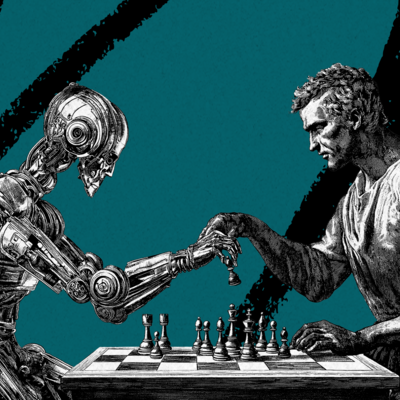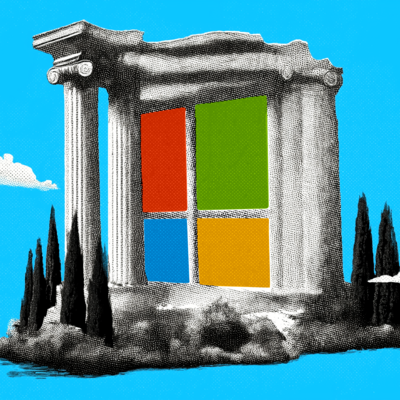
Was this newsletter forwarded to you? Sign up to get it in your inbox.
The defining software product of the last several decades is the spreadsheet.
Before Excel came VisiCalc, a spreadsheet often known as the first killer app for computers. It transformed how professionals did their jobs and became so essential that people bought computers just to use it. In the 1980s, companies fought a full-on battle for spreadsheet dominance. Entrants like IBM’s Lotus-1-2-3 gained ground, and in 1985, when Microsoft released Excel, VisiCalc encountered fierce competition. With the release of Windows 3.0 in the 1990s, Excel became the dominant spreadsheet program. And we haven’t looked back since.
Excel is a good product because it’s easy for beginners to get started: All you have to do is start typing in a cell. But it became a great product because it’s also incredibly powerful: Expert users can do everything from complex financial modeling to data analysis and visualization to building video games.
Excel was originally designed for business users working in finance and accounting roles, but its versatility has made it a ubiquitous, general-purpose tool. It’s also become the source of startup ideas. Just find a customer who’s manually operating a process in Excel and build a SaaS app designed for them.
Stripe’s Patrick McKenzie summed up Excel’s generativity best when he wrote, “My favorite symptom of an unmet need for software is any Excel spreadsheet which is ever updated by one employee, sent to a second employee, updated, and then sent back. Every time that happens a SaaS angel gets its wings."
The venture capitalist Tomasz Tunguz was the first to observe that over the last 15 years, Excel has been unbundled into a host of other apps, such as Asana, Looker, and QuickBooks. But this unbundling was only possible once Excel became ubiquitous enough for users to know they wanted a purpose-made alternative. In order for that to happen, Excel needed widespread adoption with power users who began using it for niche workflows that it wasn’t originally designed to support.
Once those workflows were created, the power users realized that parts of their workflow were inefficient, or that features were missing for their use cases. They felt a need for purpose-built tools—and that became the opportunity for B2B SaaS to develop into a $327 billion market.
Just like Excel spawned the B2B SaaS era, general-purpose chatbot applications like ChatGPT, Claude, and Gemini will spawn a new era of startups for a new generation of computer users. AI chatbots have the same blend of accessibility and power as Excel did. They’re also trending toward the same level of general-purpose ubiquity—in far less time.
Those who use AI today are becoming familiar with the atomic units of AI-based software: prompting, context windows, few-shot learning, and multi-modality. They’ll use ChatGPT or Claude to create workflows that work for their niches. In the process, they’ll develop opinions about how those workflows could be better, easier, cheaper, faster, and more secure.
That creates the opportunity to unbundle those workflows into a totally separate app. As LLM adoption increases, so, too, does the opportunity for startups.
I’ve seen this first hand. About a month ago we released Spiral, an AI app that automates repetitive creative work like X posts, LinkedIn posts, headline creation, and product release notes. It already has more than 3,500 users and is growing every day.
The Only Subscription
You Need to
Stay at the
Edge of AI
The essential toolkit for those shaping the future
"This might be the best value you
can get from an AI subscription."
- Jay S.
Join 100,000+ leaders, builders, and innovators

Email address
Already have an account? Sign in
What is included in a subscription?
Daily insights from AI pioneers + early access to powerful AI tools









Comments
Don't have an account? Sign up!
I liked the post a lot and especially the intro about JTBD.
But I don’t think it’s true. Software start-ups have a moat partly because building a team of designers and engineers to create and maintain a product is hard. But increasingly you don’t need to do that anymore; AI can write code and build products too. This democratisation means everyone gets to be a SaaS founder. But rather than paying by subscription for a fixed set of polished features, the “products” they be will be one-off, single-use, disposable software that’s good enough — and free.
“It’s different this time” because foundation models are very different from the stuff of which VisiCalc was made. (Probably I’m both wrong and right about this: the niches in which SaaS work will get tougher but they’ll still be around).
@a_9796 This is Kate Lee, the EIC of Every. Thank you for sharing this feedback. We'd like to include it in our Sunday newsletter and credit your job function/title. I'd appreciate if you could let me know. Thank you!
@kate_1767 hey Kate. Thanks for the reply. My name is Robin Allenson. I’m the CEO & Co-founder at Similar.ai.
Dan.... you are writing better now that you are taking meds. I know you have a lot going on in that big brain of yours and I'm glad for the emphasis on CONTEXT instead of screenshots. I understand Excel and explaining AI that way starts to make sense. I appreciate the clear and short words that finally tells me why.... why we need Spiral. It is a prompt builder. A lot of us will never write code but we do have people and AI robots who need clear instructions in order to deliver back to us the work we delegate to them.